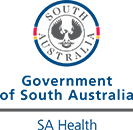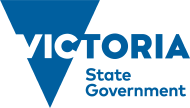Notification of illness and disease
Key facts
- Notifiable diseases are diseases that must be reported to government health authorities.
- Reporting helps prevent and manage outbreaks.
- Your doctor must tell your state or territory department of health if you are diagnosed with a notifiable disease.
- When they report a notifiable disease, all your information is confidential and your privacy is protected by law.
- Your doctor will advise you on the personal and public safety steps you need to take if you have a notifiable disease.
What are notifiable diseases?
Some illnesses are called 'nationally notifiable diseases'. This means that if your doctor finds out you have one, they must report it to the Australian Government Department of Health. The government keeps track of certain diseases, to help manage outbreaks and improve healthcare. Not all notifiable diseases are contagious (they don't always spread from person to person).
It is the responsibility of the health professional, hospital or pathology service to report a notifiable disease once it has been diagnosed. Each state and territory in Australia has their own notifiable disease list and different ways to report cases.
If you are diagnosed with a notifiable disease, you might be contacted by health authorities. You may also need to notify people you have been in contact with. No information about you or your health becomes public.
Why are some illnesses and diseases notifiable?
The main reason that notification of serious diseases is important, is to track the spread in the community. This means they can respond quickly to protect public health. For example, notifications can help identify outbreaks, allowing for quick response to prevent further spread of disease.
Disease notifications can help shape health policies and so that health services stay effective. By understanding when and where illnesses occur, governments can better plan healthcare resources. This information is important for allocating resources. It also helps governments set priorities for medical research. Notification helps researchers recognise trends over time, measure the success of public health activities, and develop strategies to keep communities healthy.
Notifiable disease lists
The Australian Government and the states and territories all have their own laws and lists about communicable diseasesMany conditions are on all state lists, but some are only notifiable in 1 or 2 areas.
Examples of notifiable diseases include:
- infections caused by bacteria such as legionella
- diseases or conditions caused by viruses such as influenza, COVID-19 and HIV
- infections spread by contact such as hepatitis
- infections spread through the gastrointestinal route such as listeriosis
- sexually transmitted infections such as chlamydia
- diseases that can be prevented by vaccines such as measles
Notifiable diseases include those spread by insects, such as malaria and those you can catch from animals, such as brucellosis. Diseases or infections that can pass from animals to humans, such as Mpox (Monkeypox), are also notifiable diseases.
Some notifiable diseases that are not contagious. One example is cancer, which is notifiable in all Australian states and territories.
What happens to my information?
If you have a notifiable disease, all your information is confidential and your privacy is protected by law. It is used for planning purposes and for research. Personal identifying information is removed before sharing the information.
You can choose to hide your health records in your My Health Record data (the Australian Government's digital health record system). You can decide which of your healthcare providers can access your record. This may limit a healthcare provider's ability to access your medical information.
What information is notified?
Your information is de-identified — this means that your health data is not linked to you personally. Your name or other key identifying features are not included.
The data includes your:
- postcode
- state or territory
- disease diagnosis
- sex
- age
- Indigenous status
What do I need to do?
If you find out that you have a notifiable disease, ask your doctor about the personal and public safety steps you need to take. This will depend on many things, including the disease you have. If you have a disease that can spread to others, you should take steps to avoid infecting other people. For example, you may need to stay away from work or school.
If you have a sexually transmitted infection, you should tell your current and previous sexual partners so they can get treatment if necessary. This can be difficult to do, but you can get support from a sexual health clinic or use an online partner notification service.
Resources and support
You can call the healthdirect helpline on 1800 022 222 (known as NURSE-ON-CALL in Victoria). A registered nurse is available 24 hours a day, 7 days a week.
The Australian Government lists diseases that are nationally notifiable.
Each state and territory has their own disease surveillance and public health response. Find your state information below:
- Australian Capital Territory
- New South Wales
- Northern Territory
- Queensland
- South Australia
- Tasmania
- Victoria
- Western Australia
Let Them Know is a free notification service for people who have been diagnosed with an STI to easily let their sexual partners know they might be at risk.
If you are worried or feeling anxious after a diagnosis of a notifiable disease, reach out for support. For advice and to get connected to local mental health services, call Medicare Mental Health on 1800 595 212. Check the operating times.
Learn more here about the development and quality assurance of healthdirect content.
Last reviewed: October 2024















